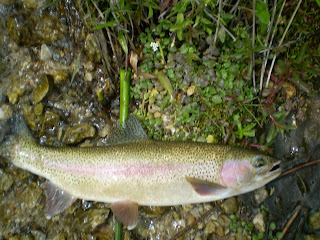 (420 E. Poindexter St.) and Pappa T’s. Then I asked the ladies at the Sundowner Motel and they mentioned the same ones. Sparky’s became my favorite. Their BBQ pulled pork sandwiches were great but they also had excellent sweet potatoes fries and sauce. One evening Tori, Kevin and I ordered and extra side of yet to become world-famous sweet potatoe fries because they were so good. The restaurant, as the name implies, has the theme of a garage. Even the napkins are red oil rags. The lights are in gas cans and the entire restaurant, walls, windows, etc. has old souvenirs or memorabilia of an old age car garage. Sparky’s is right across from the University of Montana Western. Yes, Dillon, MT with a population over
(420 E. Poindexter St.) and Pappa T’s. Then I asked the ladies at the Sundowner Motel and they mentioned the same ones. Sparky’s became my favorite. Their BBQ pulled pork sandwiches were great but they also had excellent sweet potatoes fries and sauce. One evening Tori, Kevin and I ordered and extra side of yet to become world-famous sweet potatoe fries because they were so good. The restaurant, as the name implies, has the theme of a garage. Even the napkins are red oil rags. The lights are in gas cans and the entire restaurant, walls, windows, etc. has old souvenirs or memorabilia of an old age car garage. Sparky’s is right across from the University of Montana Western. Yes, Dillon, MT with a population over 3,000 has a university.
3,000 has a university.Papa T’s is located in uptown Dillon, the center of town (10 N. Montana St.). The restaurant has long tables and round tables resembling a cultural hall. It has slot machines on the side walls, a juke box with pool tables and video games in the back. Nick and I ordered their chicken fried steak and potatoes. It was very good and filling, great after a long day of fishing.
Buffalo Lodge is located across the highway from Clark Canyon Reservoir and has a wonderful view. The best thing I found to order was a bacon cheese burger, if that says anything about
 their menu. They did have great trophy mounts of moose, buffalo, elk and of course, trout.
their menu. They did have great trophy mounts of moose, buffalo, elk and of course, trout.

































